Environmental Integration on ...
Online Conference
10 Apr 2025 / 12 Apr 2025 read more
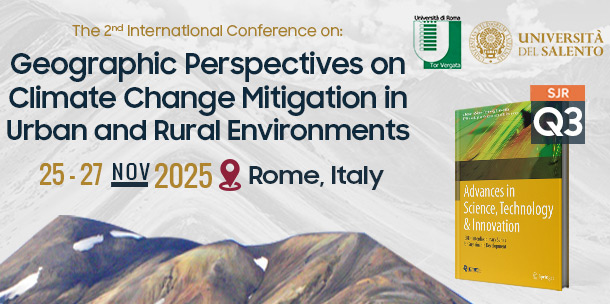

Associate Professor of Geography at the University of Rome Tor Vergata.

Fabio Pollice
Geographer, Rector of the University of Salento.

Assistant Professor of Geography at the University of Rome Tor Vergata.

Senior Researcher of Economic and Political Geography, Department of Social and Human Sciences, University of Salento.
Manar Magdy
Conference Coordinator
[email protected]
(+20) 3 5763827 | (+20) 3 5763828
(+20)1000028021
Subscribe to our newsletter
The geographic perspective on climate change mitigation is essential for understanding the spatial variability of climate impacts, optimizing resource distribution, assessing vulnerability, guiding spatial planning, and promoting international collaboration. By embracing the geographical dimension of climate change mitigation, we can encourage a harmonious coexistence between humanity and the planet.
There is a link between geography and solutions for climate. Geography provides a framework for understanding and addressing various challenges and finding solutions in different contexts. Geography plays a crucial role in understanding the spatial dimensions of problems and developing context-specific solutions. By considering geographic factors, we can address challenges in resource management, environmental planning, disaster risk reduction, climate change adaptation, spatial planning, and international collaboration.
Geographical factors can influence the effectiveness of solutions in various contexts. They can influence the effectiveness of solutions by shaping resource distribution, vulnerability and risk assessment, cultural and socio-economic context, infrastructure and accessibility, and opportunities for international collaboration. Considering these factors helps tailor solutions to specific geographic contexts, increasing their relevance, acceptance, and impact.
That is why IEREK is hosting the second edition of its “Geographic Perspectives on Climate Change Mitigation in Urban and Rural Environments” conference. Keeping the geographic perspective in mind while fending for solutions to mitigate climate change in urban and rural environments is of great importance, and the conference aims to press further on that idea.
Conference Scope
The conference will focus on understanding the role of geography in spatial analysis, planning, and the implementation of climate change mitigation measures. It will address the unique challenges and opportunities for climate change mitigation in both urban and rural settings, including sustainable urban planning, green infrastructure development, energy-efficient buildings, low-carbon transportation systems, agricultural practices, forestry, and land management. The conference will also examine the vulnerability of urban and rural environments to climate change impacts and the importance of community engagement, and participation in supporting effective climate change mitigation efforts. Overall, the conference aims to promote interdisciplinary discussions, knowledge exchange, and the identification of innovative solutions that use geographic perspectives to address the complex challenges of climate change mitigation in diverse geographic contexts.
Statement of Purpose
Held in collaboration with the university of Tor Vergata, Rome, a pioneer in the field, the aim of the conference "Geographic Perspectives on Climate Change Mitigation for Urban and Rural Environments" is to bring together researchers, practitioners, policymakers, and stakeholders to explore the intersection of geography and climate change mitigation strategies. It will focus on understanding the role of geography in spatial analysis, planning, and the implementation of climate change mitigation measures in both urban and rural settings. By bringing together experts from various fields, the conference aims to advance understanding, share best practices, and promote effective climate change mitigation strategies in urban and rural environments.
1.1. Geographic Approaches to Urban Planning and Design: Models for Cities and Rural Areas.
1.2. Developing Rural Communities with Climate-Resilient Infrastructure.
1.3. Spatial Planning Strategies for Enhancing Urban areas and Green Spaces.
1.4. The Role of Geographic Tools in Disaster-Resilient Community Design.
1.5. Geographic Methods for Reducing Urban Carbon Footprints.
1.6. Equitable Access to Resources in Rural and Urban Areas.
1.7. Geographic Strategies for Mixed-Use Developments.
1.8. Enhancing Rural Connectivity Through Sustainable Geographic Solutions.
1.9. Spatial Techniques for Monitoring Urban Growth and Density.
1.10. Geographic Insights into Retrofitting Existing Urban Areas.
2.1. Geospatial Mapping of Climate-Resilient Crops for Global Food Security.
2.2. Optimizing Sustainable Agricultural Practices Through Geographic Analysis.
2.3. Assessing Soil Health and Productivity Through Geospatial Technologies.
2.4. Geospatial Optimization of Irrigation and Water Management Systems.
2.5. Using GIS for Monitoring Agricultural Land Use Changes.
2.6. Geographic Contributions to Combating Agricultural Emissions.
2.7. AI and Remote Sensing in Precision Agriculture and Climate Adaptation.
2.8. Geographic Insights into Vertical Farming and Urban Agriculture.
2.9. Assessing Agricultural Vulnerabilities to Climate Change Impacts.
2.10. Geographic Strategies for Enhancing Agroecological Systems.
3.1. Geographic Approaches to Designing Smart Urban Mobility Systems.
3.2. Spatial Strategies for Enhancing Active and Low-Carbon Transportation Networks.
3.3. Addressing Rural Transit Challenges Through Geographic Perspectives.
3.4. Geographic Insights into Electrification of Transportation Networks.
3.5. Assessing the Role of Public Transit in Reducing Emissions.
3.6. Evaluating Geographic Factors in Low-Carbon Freight Systems.
3.7. Spatial Planning for Efficient Urban Freight Networks.
3.8. Developing Scalable Low-Carbon Transit Solutions for Rural Areas.
3.9. Geographic Methods for Expanding Eco-Friendly Transport Infrastructure.
3.10. Climate-Responsive Urban Transit Design for Extreme Weather Adaptation.
4.1. Role of GIS in Climate Change Mitigation Strategies.
4.2. Remote Sensing Applications for Climate Change Monitoring.
4.3. Advances in Geospatial Data Integration for Policy Development.
4.4. Using Digital Twins for Simulating Climate Scenarios.
4.5. Drone Technology for Environmental Monitoring and Assessment.
4.6. Satellite Technologies for Predicting Climate Change Impacts.
4.7. Geographic Insights into Real-Time Climate Data Processing.
4.8. Machine Learning Applications in Geographic Climate Studies.
4.9. Exploring Big Data for Climate Adaptation Planning.
4.10. Mapping Climate Change Trends with Advanced Visualization Tools.
5.1. Spatial Analysis of Climate Change Vulnerabilities.
5.2. Geographic Strategies for Mitigating Urban Heat Islands.
5.3. Regional Patterns of Carbon Emissions and Reduction Strategies.
5.4. Understanding Climate Change Through Geographic Data Visualization.
5.5. Cross-Border Cooperation in Climate Mitigation Efforts.
5.6. Evaluating Climate Risks Through Geographic Perspectives.
5.7. Geographic Approaches to Climate-Resilient Urban Design.
5.8. Land-Use Changes and Their Impact on Climate Change Mitigation.
5.9. Utilizing Geographic Information Systems (GIS) in Climate Studies.
5.10. Geographic Contributions to Global Climate Agreements.
6.1. Integrating Geographic Methods for Effective Land Use Planning.
6.2. Monitoring Resource Distribution Using Geospatial Technologies.
6.3. Geographic Strategies for Preserving Agricultural Productivity.
6.4. Sustainable Forestry Management Through Spatial Analysis.
6.5. Geographic Approaches to Water Resource Management.
6.6. Geographic Solutions for Restoring Degraded Ecosystems.
6.7. Spatial Methods for Preventing Desertification and Soil Degradation.
6.8. Managing Wetlands and Coastal Areas with Geographic Insights.
6.9. Geographic Perspectives on Balancing Conservation and Development.
6.10. Analyzing the Impact of Urbanization on Natural Resources.
7.1. Geographic Methods for Reforestation and Afforestation Projects.
7.2. Mapping Climate-Resilient Habitats for Wildlife Conservation.
7.3. Geographic Approaches to Enhancing Marine Biodiversity.
7.4. The Role of Geospatial Tools in Restoring Wetlands and Rivers.
7.5. Monitoring Ecosystem Services Through Geographic Indicators.
7.6. Geographic Insights into Community-Based Ecosystem Restoration.
7.7. Sustainable Fisheries Management with Geographic Analysis.
7.8. Mapping Carbon Sequestration Potential in Forest Ecosystems.
7.9. Geographic Techniques for Assessing Biodiversity in Urban Areas.
7.10. Spatial Strategies for Enhancing Global Ecological Connectivity.
8.1. Geospatial Analysis for Managing Natural Resources Sustainably.
8.2. Integrating Geographic Insights in Global Biodiversity Action Plans.
8.3. Mapping Ecosystem Services for Targeted Resource Conservation.
8.4. Assessing Land-Use Changes and Their Impacts on Biodiversity Hotspots.
8.5. Geographic Strategies for Sustainable Watershed and River Basin Management.
8.6. Utilizing Remote Sensing for Monitoring Biodiversity and Ecosystem Health.
8.7. Spatial Approaches to Identifying Areas for Reforestation and Afforestation.
8.8. Addressing the Impacts of Urban Expansion on Adjacent Natural Habitats.
8.9. Geographic Factors Influencing Marine Resource Management and Conservation.
8.10. Climate-Driven Shifts in Biodiversity Patterns and Geographic Adaptation Plans.
9.1. Mapping Coastal Vulnerabilities to Rising Sea Levels.
9.2. Geographic Insights into Sustainable Marine Resource Management.
9.3. Geospatial Tools for Managing Coastal Urbanization.
9.4. Mitigating Erosion and Land Loss in Coastal Areas Through GIS.
9.5. Geographic Strategies for Restoring Coral Reefs and Marine Biodiversity.
9.6. Assessing the Role of Coastal Wetlands in Climate Mitigation.
9.7. Mapping Ocean Currents for Renewable Energy Potential.
9.8. Geographic Solutions for Addressing Coastal Pollution.
9.9. Spatial Techniques for Monitoring Fisheries and Marine Habitats.
9.10. Enhancing Coastal Resilience Through Geographic Analysis.
10.1. Mapping Renewable Energy Potentials Using Geospatial Data.
10.2. Geographic Factors in Developing Energy-Efficient Cities.
10.3. Evaluating Geographic Suitability for Wind and Solar Farms.
10.4. Geographic Contributions to Energy Storage and Distribution Systems.
10.5. Spatial Analysis of Energy Consumption and Efficiency in Rural Areas.
10.6. Integrating Geographic Perspectives in Smart Grid Development.
10.7. Geographic Tools for Tracking Energy Transition Progress.
10.8. Addressing Energy Inequities Through Geographic Insights.
10.9. Geographic Innovations for Sustainable Energy Systems in Developing Regions.
10.10. Role of Geography in Advancing Global Energy Cooperation.
| Title | Date |
|---|---|
| Abstract Submission Deadline | 30 May 2025 |
| Last Notification for Abstract Acceptance & Approval to present | 15 June 2025 |
| Letter of Visa (for delegates who need visa entry) Payment required | 15 July 2025 |
| Early Payment Deadline | 20 June 2025 |
| Regular Payment Deadline | 20 July 2025 |
| Late Payment Deadline | 08 Sept 2025 |
| Extended Abstract / Short Paper Submission Deadline | 15 Aug 2025 |
| Notification of acceptance/ rejection of submitted extended abstract/ short paper | 30 Aug 2025 |
| Conference Program | 25 Oct 2025 |
| Conference Launch | 25 Nov 2025 |
The registration fee does not cover accommodation or travel expenses. A list of accommodation options can be suggested by our team if available. Please contact [email protected] for inquiries.
We recommend that all authors take advantage of the benefits that IEREK offers, including various attendance types, publishing opportunities, and opportunities for discounts and waivers.
We are pleased to inform all applicants that they can use their previous publications to register for an IEREK membership, which offers a special discount.
IEREK offers a special discount to applicants from collaborative universities that have signed an MoU with IEREK to host or co-host one of its conferences.
IEREK also provides special discounts to authors from low and medium-income countries.
Book Series/ Journal(s) Discounts:
Some of the disclosed conference fees may vary depending on the book series and/or journal(s) presented as a publication outlet, as we encourage submission to newly founded book series and/or journal(s) by presenting a discounted rate for the conference's fees.
IEREK offers many alternative venues for publication. All accepted submissions to the conference, after a rigorous double-blinded peer-review process by the respective and highly distinguished Editorial Board, will be published through one of the following venues:
Accepted papers (according to the preference of the author) will be published through the Springer book series or a special issue in one of the IEREK press open-access Journals.
IEREK offers many types of registrations that are diverse in registration fees; applicants can choose the type they are familiar with as follows:
Participants who are PhD holders, post-doctoral researchers, and universities’ affiliated professors and experts in the field.
Must provide proof of enrollment in a university by providing an enrollment certificate and/or a valid university ID (with issue/expiry date) etc.
Participants who are not affiliated with universities such as practitioners, policymakers, entrepreneurs, etc.
Have access to the event to enjoy the discussions, coffee breaks, and lunch as a co-author or audience.
An author may need to attend the conference for presentation only to present a research idea without publication or full paper submission; the fee in this case will be decreased.
| Type of Registration | Early Payment Deadline 20 June 2025 |
Regular Payment Deadline 20 July 2025 |
Late Payment Deadline 08 Sept 2025 |
|---|---|---|---|
| Scopus indexed-ASTI Book by Springer | |||
| Student | 350 € | 400 € | 450 € |
| Academic | 400 € | 450 € | 500 € |
| Professional | 450 € | 500 € | 550 € |
| Co-author/ Audience | 200 € | 250 € | 300 € |
| Open Access IEREK Press Journals | |||
| Student | 250 € | 300 € | 350 € |
| Academic | 300 € | 350 € | 400 € |
| Professional | 350 € | 400 € | 450 € |
| Co-author/ Audience | 200 € | 250 € | 300 € |
IEREK offers various types of participation. Applicants can apply for in-person attendance to benefit fully from conference discussions and knowledge exchange.
IEREK also offers virtual attendance for authors to present their research papers online; however, we strongly encourage all applicants to attend the conference in person.
Type 1:
Through IEREK – Springer Nature Interdisciplinary book series “Advances in Science, Technology, and Innovation” (ASTI). See previous publication here.
Type 2:
The physical fee covers:
* Each research paper should have one main author who should pay the full fee (Author fees) regardless of attendance. Co-authors, each, have their fees to pay to attend the event. This applies to online attendance as well as physical attendance.
* A research paper fee allows only one author, whether main or co-author, to attend the conference and receive only one conference kit. Extras can be requested for an additional fee.
| Type of Registration | Early Payment Deadline 20 June 2025 |
Regular Payment Deadline 20 July 202 |
Late Payment Deadline 08 Sept 2025 |
|---|---|---|---|
| Scopus indexed-ASTI Book by Springer | |||
| Student | 300 € | 350 € | 400 € |
| Academic | 350 € | 400 € | 400 € |
| Professional | 400 € | 450 € | 450 € |
| Co-author/ Audience | 100 € | 150 € | 200 € |
| Open Access IEREK Press Journals | |||
| Student | 200 € | 250 € | 300 € |
| Academic | 250 € | 300 € | 350 € |
| Professional | 300 € | 350 € | 400 € |
| Co-author/ Audience | 100 € | 150 € | 200 € |
IEREK offers virtual attendance, providing authors with a unique link to join the conference sessions and present their papers as per the announced program.
IEREK is dedicated to optimizing the benefits for each delegate so, similar to physical attendance, when it comes to virtual attendance IEREK also provides two venues for publication, which are:
Type 3:
Online attendance + Publication through Scopus Through IEREK – Springer Nature Interdisciplinary book series “Advances in Science, Technology, and Innovation” ASTI, see previous publications here.
Type 4:
The online fee covers:
* Each research paper should have one main author who should pay the full fee (Author fees) regardless of attendance.
* Co-authors, each, have their fees to pay to attend the event. This applies to online attendance as well as physical attendance.
* Participants can use only one type of discount opportunity, which meets their preferences.
* Authors should contact the conference manager through this email [email protected] to consider the discount and waiving for all the above cases so that the conference manager can provide an exclusive invoice for each case.
| Afghanistan, Algeria, Angola, Bangladesh, Benin, Bhutan, Bolivia, Burkina Faso, Burundi, Cabo Verde, Cambodia, Cameroon, Central African Republic, Chad, Comoros, Congo, Congo Dem. Rep., Côte d'Ivoire, Djibouti, Egypt, Eritrea, Eswatini, Ethiopia, Gambia, Ghana, Guinea, Guinea-Bissau, Haiti, Honduras, India, Iran, Jordan, Kenya, Kiribati, Kyrgyz Republic, Lao PDR, Lebanon, Lesotho, Liberia, Madagascar, Malawi, Mali, Mauritania, Micronesia, Mongolia, Morocco, Mozambique, Myanmar, Nepal, Nicaragua, Niger, Nigeria, Pakistan, Papua New Guinea, Philippines, Rwanda, Samoa, São Tomé and Principe, Senegal, Sierra Leone, Solomon Islands, Somalia, South Sudan, Sri Lanka, Sudan, Syria, Tajikistan, Tanzania, Timor-Leste, Togo, Tunisia, Uganda, Ukraine, Uzbekistan, Vanuatu, Vietnam, Yemen, Zambia, Zimbabwe |
iDirect is a new and efficient platform that allows direct submissions of research papers across various fields of science. iDirect accepts and covers all fields of science, not only those related to a particular conference. Individual authors are encouraged to submit their research discussing new ideas and presenting solutions to everyday problems that fall under numerous scientific themes. The iDirect platform is integrated into the peer review system for online conferences. You can publish your work through iDirect without the need to attend the conference or adhere to any submission deadlines. iDirect accepts a wide range of disciplines, eliminating the need to align with the conference's specific theme or scope. Based on the scope of your research, we will identify the most relevant proceedings for publication. The editor will schedule a discussion with you to review your presentation before proceeding to the peer-review process. Learn more here!
IEREK puts a lot of effort into expediting the peer review process to publish articles as quickly as possible. This requires prompt responses from all authors to the editors' comments, if any. Your swift response is highly appreciated to advance the production process and get your articles online. We prioritize the first author to respond as per our formula. The conference proceedings will be divided into multiple books, with the first one scheduled for publication within 3 months after the conference date. We encourage all authors to aim for publication in the first release.
For participants who need Entry Visas to the country where the conference will be held, IEREK will issue the corresponding invitation letter for accepted applicants to facilitate visa issuance. Please notice that we will attempt to assist you in obtaining a visa but the responsibility is yours and the decision rests solely with the appropriate Embassy. For the requirements of issuing a visa letter please read more here!
IEREK has an unyielding policy regarding plagiarism. We believe that copying/taking the ideas and work of other Authors without permission and credit is fraudulent. The Reviewing committee and IEREK employees have the authority to reject a paper during its reviewing process, based on the paper being subjected to either minor or major plagiarism.
Authors must refer to, and abide by, the following instructions in submitting their abstracts/ papers:
This is not a prerequisite for presenting your work at the conference. Meaning, you can present your submitted abstract without intending to publish your work.
This process can only be initiated after payment completion and confirmation:
All accepted submissions to the conference, after a rigorous double-blinded peer-review process by the respective and a highly-extinguished Editorial Board, will be published in one of the following:
 Advances in Science, Technology and Innovation (ASTI), an IEREK Interdisciplinary book series published by Springer Nature. (Scopus indexed)
Advances in Science, Technology and Innovation (ASTI), an IEREK Interdisciplinary book series published by Springer Nature. (Scopus indexed) About ASTI
Advances in Science, Technology & Innovation (ASTI) is a series of peer-reviewed books based on important emerging research that redefines the current disciplinary boundaries in science, technology and innovation (STI) in order to develop integrated concepts for sustainable development. It not only discusses the progress made towards securing more resources, allocating smarter solutions, and rebalancing the relationship between nature and people, but also provides in-depth insights from comprehensive research that addresses the 17 sustainable development goals (SDGs) as set out by the UN for 2030.
The series draws on the best research papers from various IEREK and other international conferences to promote the creation and development of viable solutions for a sustainable future and a positive societal transformation with the help of integrated and innovative science-based approaches. Including interdisciplinary contributions, it presents innovative approaches and highlights how they can best support both economic and sustainable development, through better use of data, more effective institutions, and global, local and individual action, for the welfare of all societies. The series particularly features conceptual and empirical contributions from various interrelated fields of science, technology and innovation, with an emphasis on digital transformation, that focus on providing practical solutions to ensure food, water and energy security to achieve the SDGs. It also presents new case studies offering concrete examples of how to resolve sustainable urbanization and environmental issues in different regions of the world. Read More.
The ASTI series is fully indexed in Scopus and any chapter/ paper published as part of this series will be seen on the Scopus database. Some titles have been successfully indexed or submitted for indexation in the Web of Science (ISI).
 IEREK Press Journals, a multidisciplinary publisher that aims to cultivate and disseminate research.
IEREK Press Journals, a multidisciplinary publisher that aims to cultivate and disseminate research.
ESSD is a peer-reviewed, scholarly journal that aims to systematically develop the research-driven curiosity and evidence-based discourse of aspiring scholars that seek to contribute to the academic community. As the world is currently living in an age of information where sources are widely available on the Internet, we at ESSD seek to efficiently utilize the available information to help create robust and evidence-based knowledge. In the process, we offer researchers, in general, and young and aspiring ones in particular a quicker way to get their work published and gain exposure through online open access. We pride ourselves on getting submitted work to be published quickly, through the use of our worldwide pool of subject specialist peer reviewers. Find out more about ESSD International Journal here.

ARChive is an open-access journal that publishes conference proceedings on a wide range of topics relating to social sciences. Consequently, it accepts original research papers on a wide spectrum of subjects. ARChive is a journal published on behalf of researchers that perpetually make an effort to contribute to their fields and provide them with high visibility of research submitted. The series publishes, both, theoretical and experimental high-quality papers of current and perpetual interest. It serves to cultivate, propagate, and essentially archive academic research that has been authored and submitted for academic conferences.
Find out more about ARChive International Journal here.

Resourceedings is an open access journal that publishes conference proceedings. Conference proceedings compromise of different disciplines, ranging from Engineering including built environments, architecture, and sustainability. Disciplines also include Technology and Energy. Resourceedings is a journal that publishes research articles that shed light on different crucial issues in order to provide them with solutions and suggestions. The journal publishes articles submitted by researchers of interest in different fields.
Find out more about Resourceedings International Journal here.
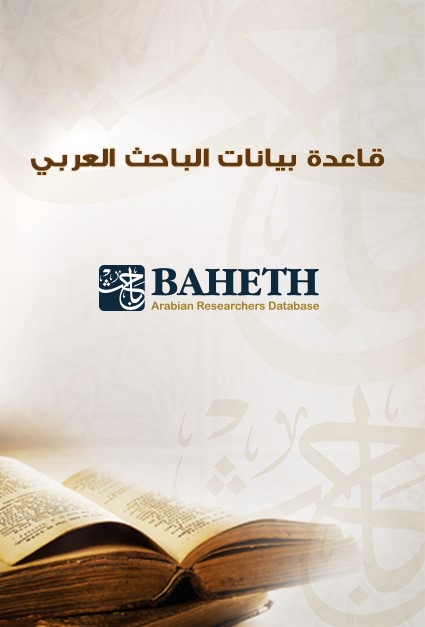
“BAHETH” in Architecture, Engineering, and Technology, is a peer-reviewed journal that publishes original academic research in the fields of Architecture, Engineering, and Technology. The journal welcomes research in the Arabic Language with an English Abstract. Papers submitted to this journal in Arabic must be presented in the English Language in the conference.
Find out more about BAHETH International Journal here.
Participants’ Instructions
Registration
To help the organizers plan for inter-disciplinary dialogue, participants are requested to choose from the conference themes/ Topics upon registration.
They must also refer to, and abide by, the following instructions in registering and/ or submitting their contributions:
NOTE: If you are contributing as an Author of a submitted abstract (for publishing consideration and/or presentation), and regardless of attendance, the fee for the registration is the same. See and Registration & Fees for more information.
Types of Participation
1. Attend/ Present in-person or Online and Publish in indexed Conference proceedings
The conference offers a Physical attendance option for your convenience. That said, participants will have a chance to present their abstract/research, on campus, and have their work considered for publication in the ASTI Series by Springer as part of the conference proceedings.
See Author Instructions and Registration & Fees for more information.
2. Registration to publish in the proceedings without presenting/ attending
If your full paper is accepted, it may be published in the conference proceedings book in the Advances in Science, Technology & Innovation Book Series by Springer (indexed in Scopus) even if you are not attending the conference. In this case, the accepted work will not be included in the final conference program. See Author Instructions and Publishing Opportunities for more information.
3. Non-presenting participant
Non-presenting participants may also wish to attend the conference as Audience Members or Co-authors contributing to an already submitted abstract/ paper. See Registration & Fees for more information.
Notes to consider:
* Attendance online and in-person are possible upon confirmation with the conference secretariat/ coordinator at [email protected] and following Registration & Fees covered.
* The participation fee is uninform for all options presented above.
* For participants wishing to attend in-person, a visa invitation letter will be provided upon request, for which case a copy of your passport will be required. The invitation letter can only be provided after acceptance and full payment.
* Before planning your trip, be sure to check travel restrictions to the conference’s hosting country. Visit travel information and restrictions, and send in your questions if you have any to the conference coordinator at the email [email protected]
The Role of Artificial Intelligence in Geographic Research and Applications
Artificial intelligence (AI) transforms geographic research by enhancing spatial analysis, predictive modeling, and decision-making processes. As geospatial data continues to expand in volume and complexity, AI-driven methodologies are proving to be essential tools in overcoming current global challenges. From climate change modeling to disaster risk assessment, AI is transforming the way we understand and interact with geographic information.
This special session explores the integration of AI with geographic research, focusing on the applications in remote sensing, geographic information systems (GIS), urban planning, and environmental monitoring. By the advanced machine learning techniques, AI is improving the accuracy of climate predictions, optimizing resource allocation, and facilitating the development of smarter cities. Moreover, AI-powered geospatial technologies have an important role in socio-economic studies, archaeology, military applications, and humanitarian efforts.
Join us in this session as it investigates the intersection of artificial intelligence and geography. This forum will provide a collaborative space for scholars, researchers, and professionals to exchange insights on leveraging AI for geographic studies. The discussions will emphasize how AI-driven innovations can improve environmental sustainability, disaster management, and spatial intelligence, ultimately encouraging a more data-driven and resilient world.
Scope
The session "The Role of Artificial Intelligence in Geographic Research and Applications" brings together experts from geography, AI, environmental science, and spatial analytics to examine the transformative role of AI in geographic research and applications. By investigating AI’s integration with GIS, remote sensing, and predictive analytics, the session aims to showcase innovative methodologies that improve spatial data interpretation, support decision-making, and address urgent global challenges such as climate change, urbanization, and disaster preparedness.
This session will highlight important themes, including AI’s contribution to climate change prediction, urban planning, and historical geography. It will also explore emerging applications of AI in military geospatial intelligence, location-based services, and socioeconomic geography, reinforcing the importance of geospatial AI in advancing scientific knowledge and practical solutions.
Statement of Purpose
This special session is designed to encourage the collaboration among geographers, AI researchers, policymakers, and industry practitioners. The session aims to facilitate discussions on the latest AI-driven innovations in geographic research and their implications for sustainability, security, and social development. Participants will have the opportunity to present novel research, share case studies, and propose actionable solutions that leverage AI for spatial analysis and geographic problem-solving.
Topics:
Geography’s Influence on Sustainable Economies: The Role of Eco-Technology for a Greener Future
Geography shapes economic systems by influencing trade, resource distribution, and industrial development—all essential to sustainability. As economies transition toward greener and more resilient models, understanding how geographic factors affect circular economy models, resource efficiency, and eco-technological innovations is important.
This session explores how geography, economy, and sustainability intersect, with a special focus on eco-technology’s role in creating a greener future. The circular economy, which aims to minimize waste, optimize resource use, and promote regeneration, depends heavily on geographic conditions. Factors like natural resources, regional policies, and urban planning determine how well these models can be implemented. By leveraging spatial analysis, GIS, and region-specific policies, we can develop economic frameworks that foster both growth and sustainability, ensuring that progress is environmentally responsible.
This session will examine how geographic insights shape sustainable economic development, with a focus on regional policy frameworks, supply chain localization, and urban planning for circular economies. Discussions will explore the role of geospatial technologies, transportation infrastructure, and cultural factors in advancing eco-innovation and sustainability.
Join us in exploring how geographic insights can revolutionize economic sustainability. This session provides a platform for researchers, policymakers, and industry professionals to exchange ideas, share case studies, and collaborate on solutions for a more sustainable economic development.
Scope
The session "Geography’s Influence on Sustainable Economies: The Role of Eco-Technology for a Greener Future" brings together experts to examine the geographic dimensions of circular economies and sustainability. By analyzing how location-based factors influence economic models, this session will highlight innovative approaches to resource utilization, waste reduction, supply chain efficiency, and eco-technological advancements. This discussion will connect economic strategies to geographic insights, ensuring that sustainability efforts align with local needs and conditions local contexts and maximize environmental and economic benefits.
Statement of Purpose
This session brings together academics, policymakers, urban planners, and industry leaders to explore the geographic foundations of sustainable economies. Through collaborative discussions, case studies, and policy analyses, participants will identify the best practices for integrating geographic intelligence into economic planning. Key topics include the influence of geography on circular economy models, successful region-specific sustainability strategies, the adoption of eco-technology and geospatial tools, and solutions that align economic prosperity with environmental responsibility. Ultimately, this session aims to deepen our understanding of how geographic perspectives can drive sustainability, ensuring that economic growth and ecological well-being go hand in hand.
Topics:

ORCID, which stands for Open Researcher and Contributor ID, is a global, not-for-profit organization that aims to provide unique identifiers for authors, researchers, and scholars. ORCiD effectively eliminates duplication and errors regarding author names, affiliations, previous works, and all related academic data.
IEREK is a proud member of ORCiD, and we contribute directly to their initiative of clear and identifiable markers for researchers and scholars. As the first Egyptian partner to ORCiD in the organization’s history, we strongly believe that by utilizing ORCiD’s database and verification services, we become one step closer to achieving an accurate, and identifiable academic landscape.
We encourage our authors to input their ORCiD ID when registering for one of our conferences, submitting an abstract, or a full paper. By doing so, you directly link your research to your identity and affiliation and can showcase your various academic efforts all in one place. By Registering your ORCiD ID, you also increase your works’ visibility and provide easy access to your entire library of research and academic activity.
Click here to learn more about ORCiD, and here to register your ORCiD ID for free.
Attending a conference dramatically enhances both your professional and personal development. They help you sharpen the saw, meet and converse with industry experts, expand your resources and grow your professional network. IEREK Conference will help you:
- The Print ISSN for “ Geographic Perspectives on Climate Change Mitigation in Urban and Rural Environment ” is 3009-7983.
- The Online ISSN for “Geographic Perspectives on Climate Change Mitigation in Urban and Rural Environment ” is 3009-7088.
- For participants who need Entry Visas to the country where the conference will be held, IEREK will issue the corresponding invitation letter for accepted applicants to facilitate visa issuance.
- Please notice that we will endeavor to assist you in obtaining a visa but the responsibility is yours and the decision rests solely with the appropriate Embassy.
Invitation Letter Issuance Process
1- In case the participant is an author who has submitted a research paper to the conference, it must get accepted by the Scientific Committee
2- Required participation fees must be paid
3- The participant should send the following information to the conference's official email:
* A clear copy of passport
* Passport number
* Full name as written in your passport.
* Date of Issuing and Expiration
* Date of Birth
* Email address of the nearest Embassy/Consulate to you
* Mobile Number including country code
4- Conference coordinator will issue the needful invitation letter and send a copy to the participant's email, in addition to another one to the corresponding email address of embassy/consulate
5- The participant should print out the invitation letter along with all other required documents by the embassy/consulate and apply for VISA
>
Rome stands as one of the finest and oldest cities in the world. The history of Rome spans over 2500 years and it has been a centre of power, politics, culture and development since its inception. Creation of the city is steeped in legend and mythology and there are various different accounts of how this majestic place was built. Various Roman emperors and Casers have ruled mighty Rome and this is the place where the colossal Roman Empire grew from.

This mighty structure is one of the most renowned and iconic landmarks in the world and a trip to Rome would not be complete without visiting the Colosseum.
Also known as the Flavian Amphitheatre, the Colosseum was constructed between 70-80 AD and at its peak was estimated to hold 80,000 spectators.

Rome holds a small country within a country – The Vatican.
This independent state is one of the most important religious sites in the world and St. Peter’s Square is an iconic place where many significant events have taken place.
Located at the front of the Vatican state, the square is actually circular and is framed by two huge sets of colonnades – Standing on these columns are beautiful statues of various religious figures and previous popes.

The mighty Pantheon stands as one of the best preserved ancient Roman buildings in the world and is one of Rome’s most famous attractions.
Constructed in 118 AD by emperor Hadrian, the building that stands today was actually built on the site where an earlier temple stood that was commissioned by Agrippa.

There are not many other fountains in the world as lavishly decorated and sculptured as the Trevi fountain.
Constructed in 1762 by Nicola Salvi, the fountain pays tribute to the Roman God Oceanus who can be seen riding his chariot pulled by Tritons and taming several Hippocamps.
The detail of the sculptures is simply wonderful and the whole facade and fountain are a true work of art.

Part of the Vatican museum complex, the Sistine Chapel is one of the most renowned religious chapels in the world and has a stunning amount of detail and iconography.
Situated in the Apostolic Palace in the Vatican City, the Sistine Chapel was extensively restored in the 1400’s and the place where the papal enclave takes place – It is here that a new pope is selected.
The Sistine Chapel is particularly famous for its extensive and detailed decorations including the Last Judgement fresco by Michelangelo and the ceiling artwork.
|
Cancellation Policy |
Up to 60 days before the event |
Up to 50 days before the event |
Up to 40 days before the event |
39 days before the event |
|
Penalty |
20% |
50% |
70% |
100% |
EXCEPTION
A refund is not possible if
-An acceptance letter has been issued (Authors only)
-The proceedings of the event have been published (Authors only)
-A visa invitation letter has been issued (All participants)
-All matters have been finalized (accommodation/travel expenses paid for)
Visa Rejection Cases
Reason and proof of rejection must be submitted. If the reason for rejection is due to an error on our part, the participant will be refunded their full fee with a deduction of a 20% administration fee.
Documents to be issued by IEREK to acquire a visa are as follows:
*Final Acceptance Letter (Authors only)
*Visa Invitation Letter
*Invoice/proof of payment
We encourage all authors and attendees to ensure their having acquired all documents (those applicable) mentioned.
If the reason for rejection is not related to any of the aforementioned and is an error on the participant’s part, the following will apply:
*Authors: may choose to let their co-author present his/her research on his/her behalf free of charge. If the author does not have a co-author, a member of the scientific committee shall present on the author’s behalf.
*Audience members/Registrants: will only be allowed to attend another similar event of their choosing that is organized by IEREK free of charge.




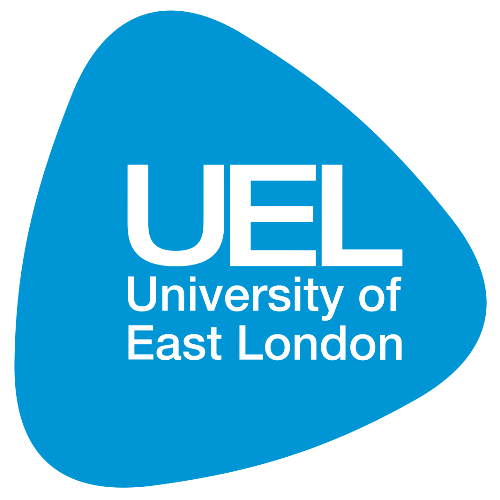









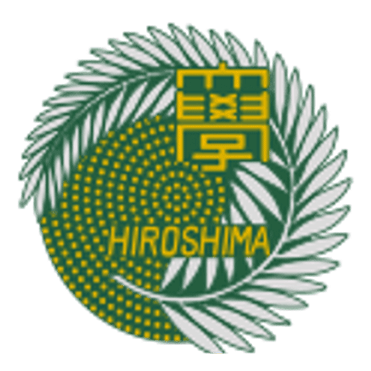

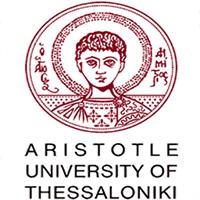
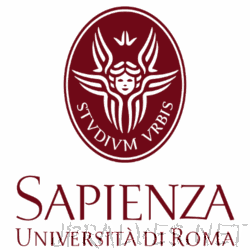
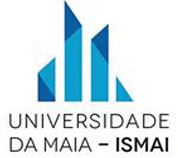



Associate Professor of Geography at the University of Rome Tor Vergata.

Fabio Pollice
Geographer, Rector of the University of Salento.

Assistant Professor of Geography at the University of Rome Tor Vergata.

Senior Researcher of Economic and Political Geography, Department of Social and Human Sciences, University of Salento.
Manar Magdy
Conference Coordinator
[email protected]
(+20) 3 5763827 | (+20) 3 5763828
(+20)1000028021
Subscribe to our newsletter
Join IEREK community